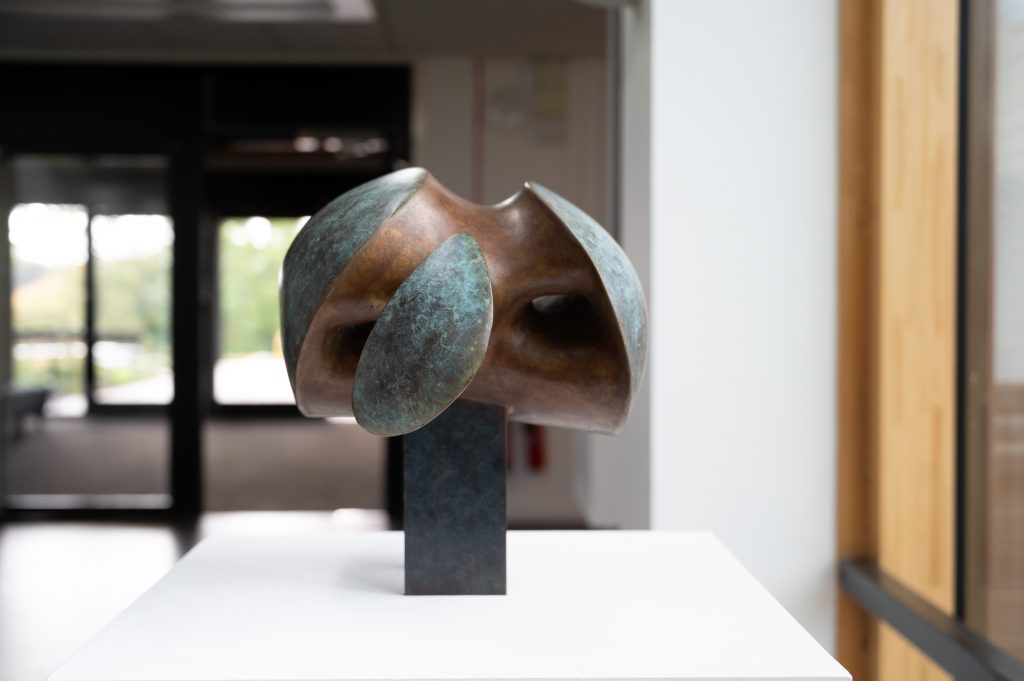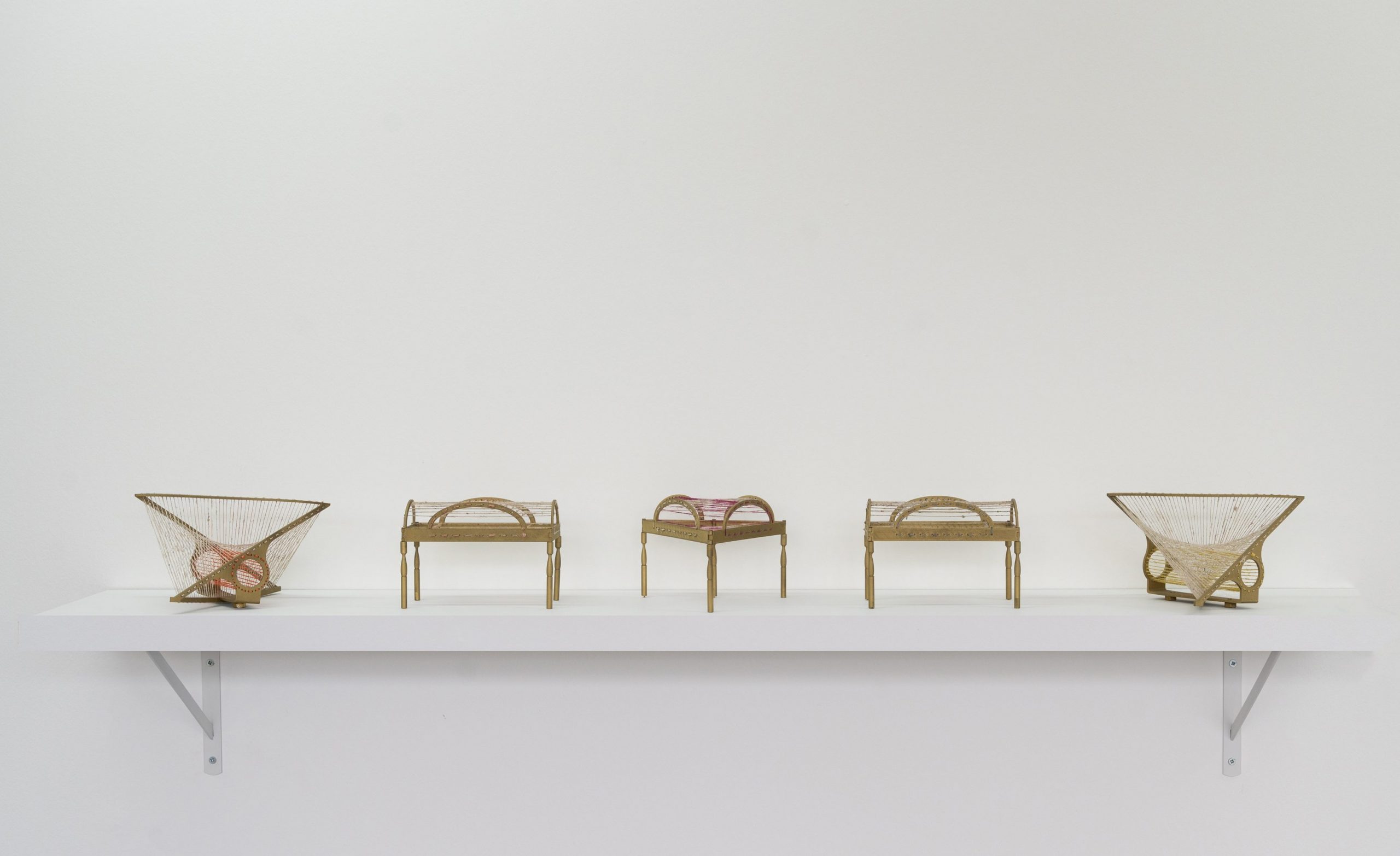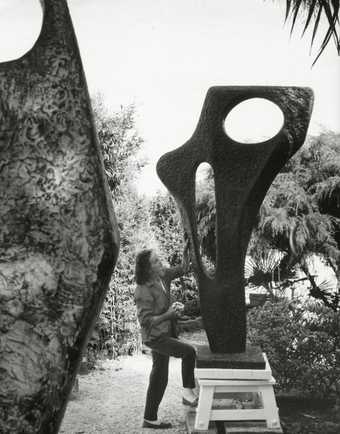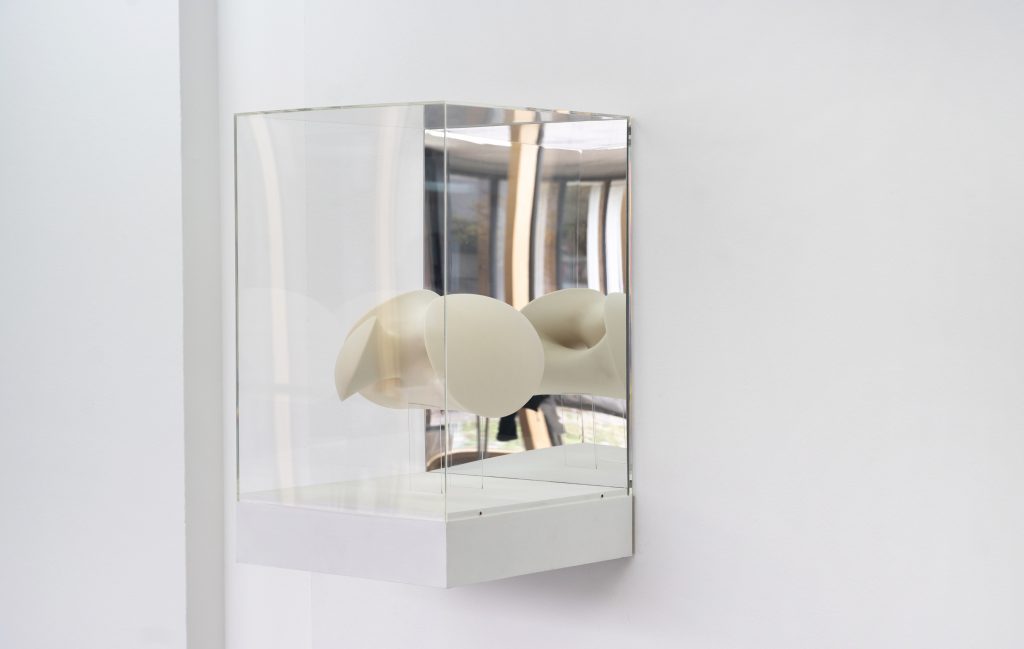The University Art Collection is delighted to exhibit works by Christine Borland as part of our exhibition programme Inspire! which considers the inspiration that the University campus and Collections provide to staff, students and visitors alike. Her exhibition Interior Dialogue explores the inspiration Christine derives from the work of artist Barbara Hepworth, whose sculpture Archaean was one of the first sculptures to be added to the University’s Art Collection in 1967.
Christine Borland was born in Darvel, Ayrshire and studied at Glasgow School of Art and the University of Ulster, Belfast. Her work has often involved collaboration with non-art related institutions, exploring areas such as forensic science, the history of medicine, medical ethics and human genetics. Borland frequently asks us to consider the fragility of human life and the way in which it is valued by social systems and institutions. She works with a variety of materials, including glass, china, fabric and bronze. Borland was nominated for the Turner Prize in 1997. Recent solo shows have included those at Glasgow Sculpture Studios (2010) and Camden Arts Centre, London (2011), and a collaborative project with Brody Condon for Edinburgh Art Festival (2012). Borland is BALTIC Professor at the BxNU Institute of Contemporary Art. She lives and works in Kilcreggan, Argyll.
Interior Dialogue and Oval Interior were created in response to her long-held emotional and intellectual engagement with Barbara Hepworth’s work and in particular Oval Sculpture, 1943. They recreate the Hepworth’s hollowed-out interior as a solid form, revealing spaces ‘hidden’ within the sculpture. The series of pierced oval sculptures, made by Hepworth in the mid 1940s is often described with reference to the land and seascapes of her home on the Cornish coast, while these artworks evoke human and post-human themes which echo the physical intimacy of Hepworth’s Hospital Drawings, made in the same period.

Central to the ideas behind Oval Interior and Interior Dialogue is to make visible an absence or a presence that without careful and intimate consideration, would go unseen. Barbara Hepworth placed great importance on human connection and the role of internal intuition, once noting, ‘I rarely draw what I see – I draw what I feel in my body.’ She frequently asks us to consider the fragility of human life and the way in which it is valued by social systems and institutions, an idea which occupied Hepworth as she made the series of wooden, oval sculptures in the mid-1940s.
Christine’s decision to cast the Interior Dialogue in bronze – whose stability is in diametric opposition to the CNC rigid foam of Oval Interior echoes Hepworth’s move into bronze in the 1950s when she began casting, most often in editions of 6 or 7, including Archaean in Stirling’s Collection which was produced in 1957.

Oval Interior and Interior Dialogue have been deliberately sited alongside Barbara Hepworth’s Archaean so that the correlation between the works can be explored, and the bodies passing by become an integral part of the dialogue.

Also on display in the exhibition are Common Groins, on loan from the artist and the Patricia Fleming Gallery. Using forms derived from mathematical models, the sculptures trace out three different kinds of architectural arch forms in space. The three different designs depicting intersecting arches are also known as ‘groin vaults’ They have been made by combining traditional and contemporary materials and processes: 3-D printing and threading with cordage made from nettle fibre. The use of natural fibres ‘woven’ into the forms, introduces an ancient, hand-working technique to disrupt the scientific method displayed in the original mathematical models which were commissioned by the Science Museum, London in 1872. These models, made to illustrate research and for use in teaching, influenced the mid-20th Century sculpture of the group of avant-garde artists which included Henry Moore and Barbara Hepworth.
Interior Dialogue or Oval Interior are now part of the University permanent collection and were purchased with support from the National Fund for Acquisitions
The exhibition Interior Dialogue is on display in Galllery One of the Pathfoot Building at the University until 31st July 2024

